As the massive momentum around Generative AI continues to build, all industry leaders are asking their teams two key questions:
How can Generative AI improve our operations?
What is required to successfully use Generative AI?
Over two weeks and across two continents, Cognite’s Generative AI for Industry event series answered these key questions with pragmatic thought leadership, in-depth demos, and an innovative product roadmap. Here’s how we answer these questions:
How can Generative AI improve our operations?
Experts discussed the application of generative AI across Asset Performance Management, Hybrid AI, and industrial robotics. Through each of these topics, similar opportunities exist:
Generate insights - While industrial organizations are progressing towards general data accessibility, turning that data into insights is often a time consuming and cumbersome process. Instead of drilling down through an asset hierarchy to find information about a specific asset, Generative AI makes it possible for end users to search in natural language to find and analyze the relevant data:
“What was the highest temperature of equipment 22PT_004 today?
Did this equipment exceed the normal temperature range last week?”
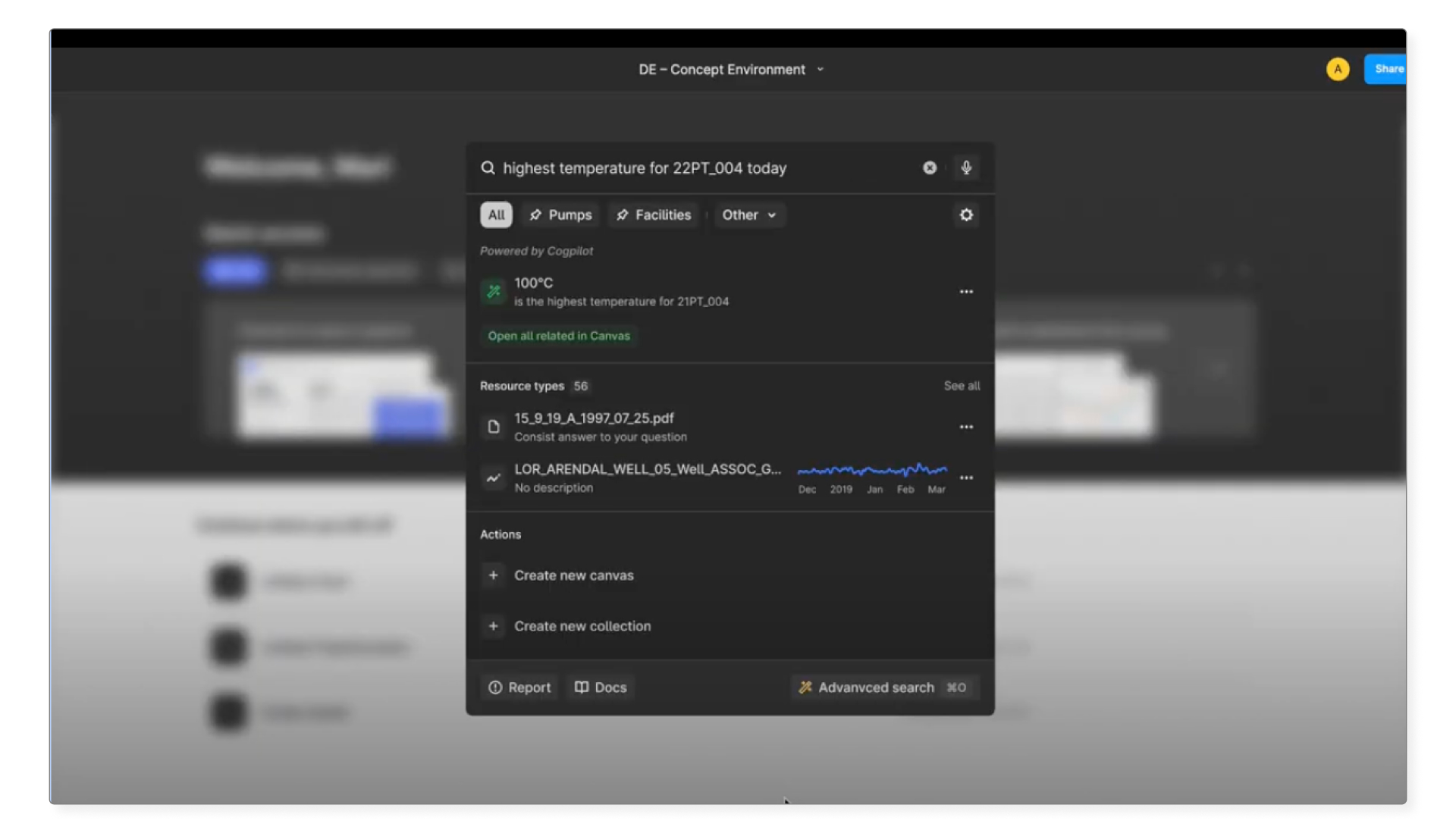
Summarize the findings of the latest maintenance report for the heat exchanger.
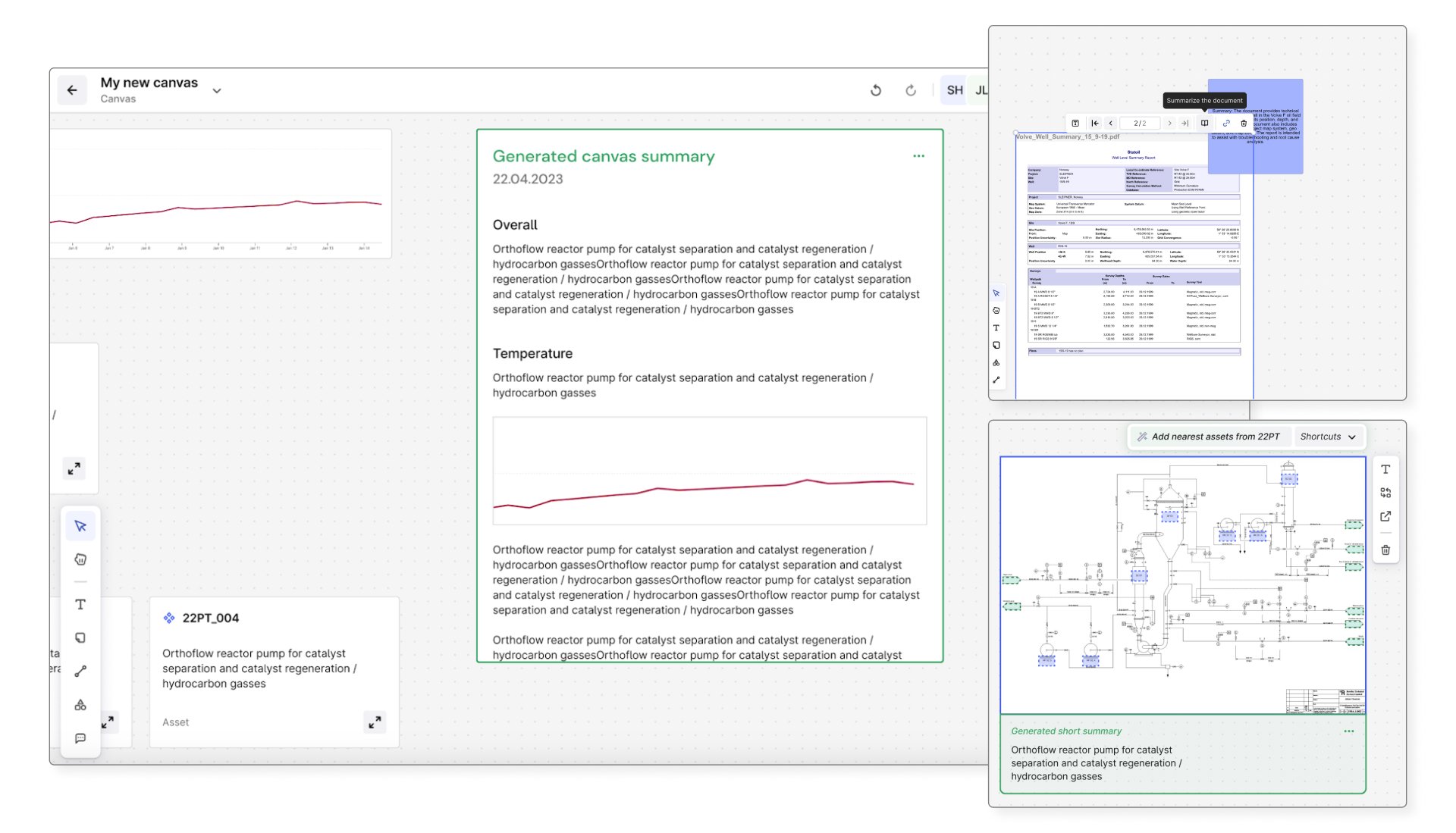
Boost Productivity - While more experienced personnel may know the right questions to ask, the workforce is changing rapidly and Generative AI can provide guided experiences to increase worker productivity. For example, imagine an operator is having an issue with an asset, using a co-pilot powered by Generative AI, the end user can receive suggestions on the proper steps to identify the root cause based on OEM product manuals, previous events, and current performance. The video below shows how this workflow could be executed.
Simplify Execution of Activities - Even the market leading low and no-code solutions have a barrier to entry for users. The Generative AI copilots will allow every single user to do so much more: The ultimate low code for use cases that remain unattainable to 'OOTB SaaS application.' Imagine having an issue with a remote asset. Instead of having to travel to the site, a subject matter expert could interact with a mobile robot, using natural language, to inspect and assess the issue. No new applications or writing code required.
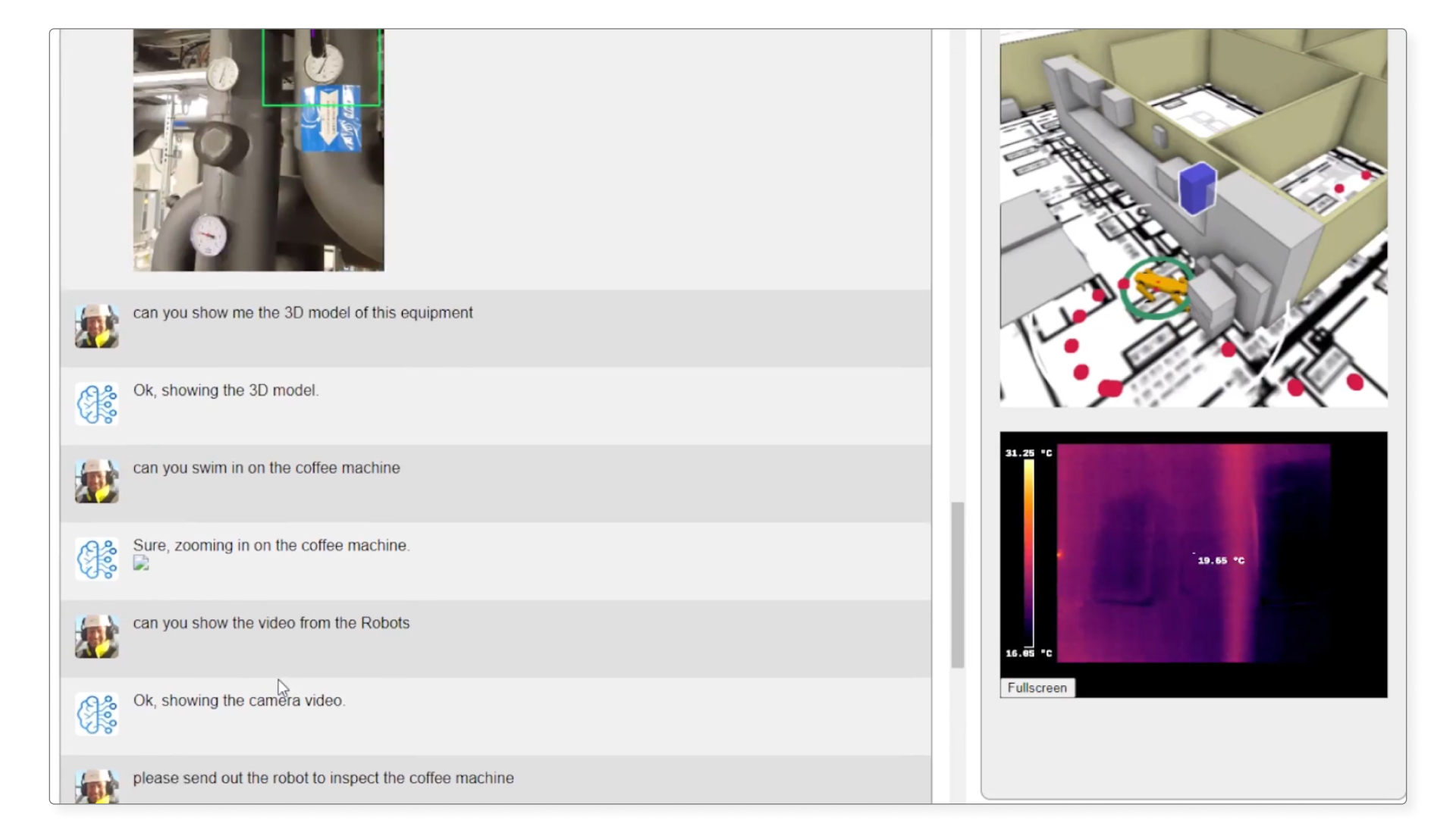
While there are more ways to embed Generative AI into your operations, it’s important to start fast. As several speakers repeated during the summit, “Generative AI is here to stay, and if you don’t use it now, you will lose to it.” This technology will become more advanced, and it will be harder to catch up as time passes. Therefore, the first step is to evaluate if your organization is prepared to leverage Generative AI successfully.
What is required for the successful use of Generative AI?
AI thrives on context. While Generative AI will be a game-changing technology, without the right context, answers are often wrong.
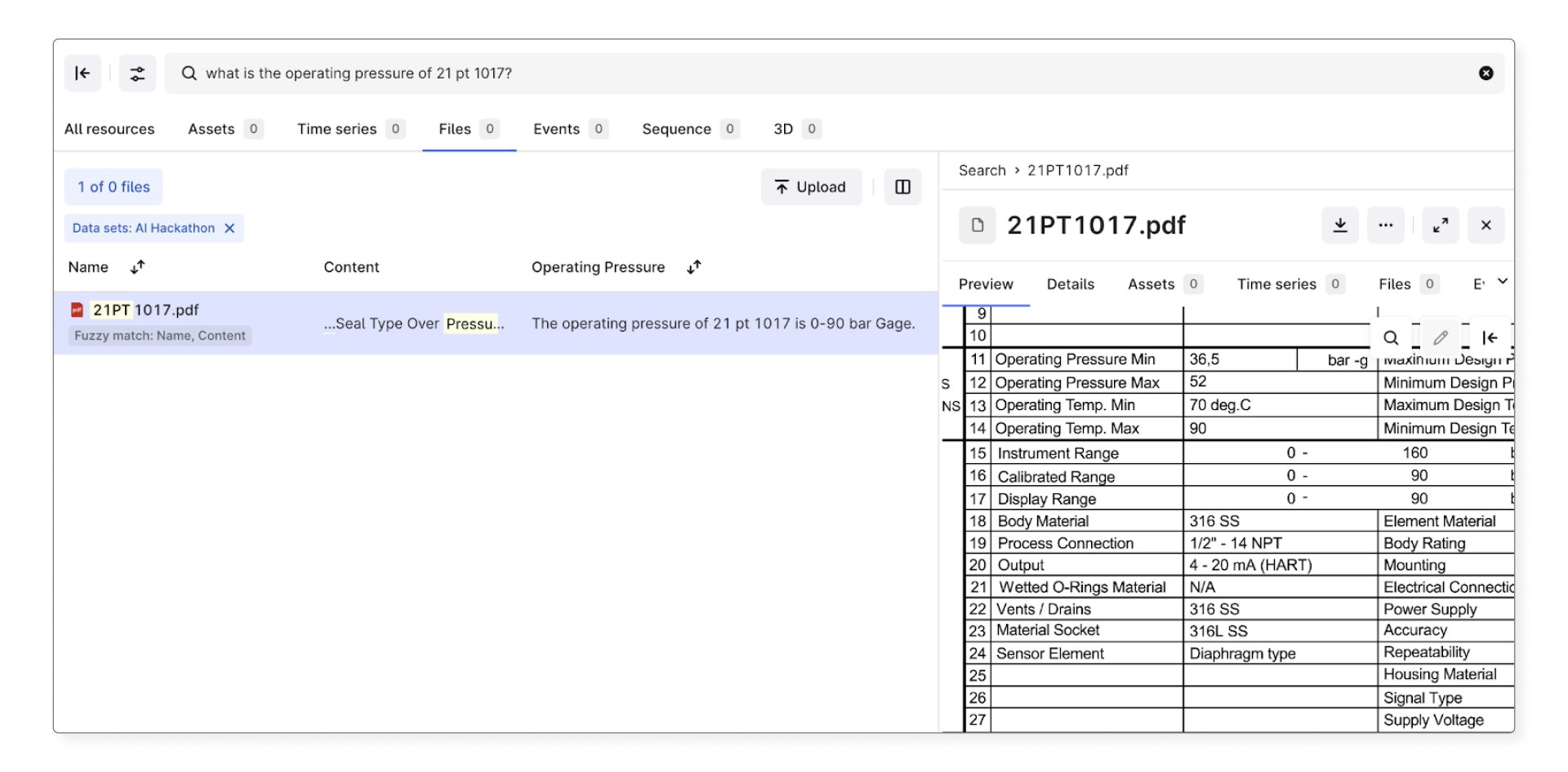
Callout that search and search result don’t match the correct answer
Large language models (LLMs) like ChatGPT are trained on 10-100s of billions of parameters, but datasets of this size don’t exist for industrial environments. If a pre-trained model is integrated with raw data in a data lake, the patterns aren’t readily identifiable to the model. For the model to understand industrial environments, it would require retraining the model on industrial data (which is expensive considering the vast variety of industrial data that gets generated) or performing significant “prompt engineering.” Using existing models on uncontextualized, unstructured industrial data significantly increases the risk of incorrect and untrustworthy answers - referred to as AI hallucinations.

To enable Generative AI solutions to provide the right answers in industrial environments without massive industrial datasets, there must be an efficient way to provide Generative AI solutions with more context: enter the industrial knowledge graph.

An industrial knowledge graph can extract data relationships, capture interconnections, and trace data lifecycles in a flexible way that adheres to industry data standards and represents your operations digitally. High-frequency time-series data, events, knowledge hidden in documents, visual data streams, and even 3D and engineering data must be liberated from the disparate systems and made available in a single data foundation. With an industrial knowledge graph, Generative AI solutions can provide correct answers to even the most complex questions.
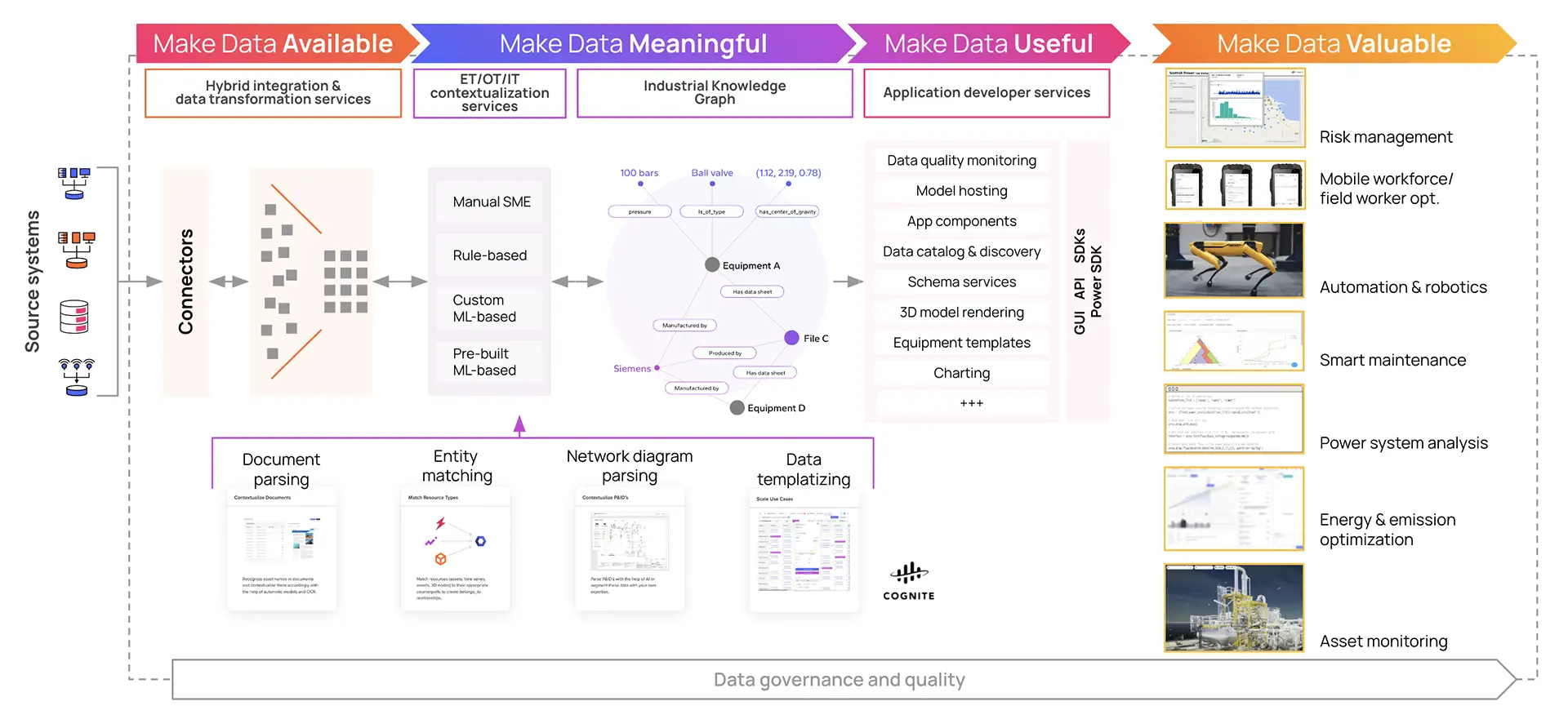
Cognite Data Fusion® is the market leader in building knowledge graphs for industry. With our unique automated contextualization engine, industrial organizations can bring more context to their operations in a fraction of the time. For those looking to capture the power of Generative AI for industry, an industrial knowledge graph can prepare your organization to become a first-mover in the opportunities ahead. To apply Generative AI in industrial environments, context means everything.

